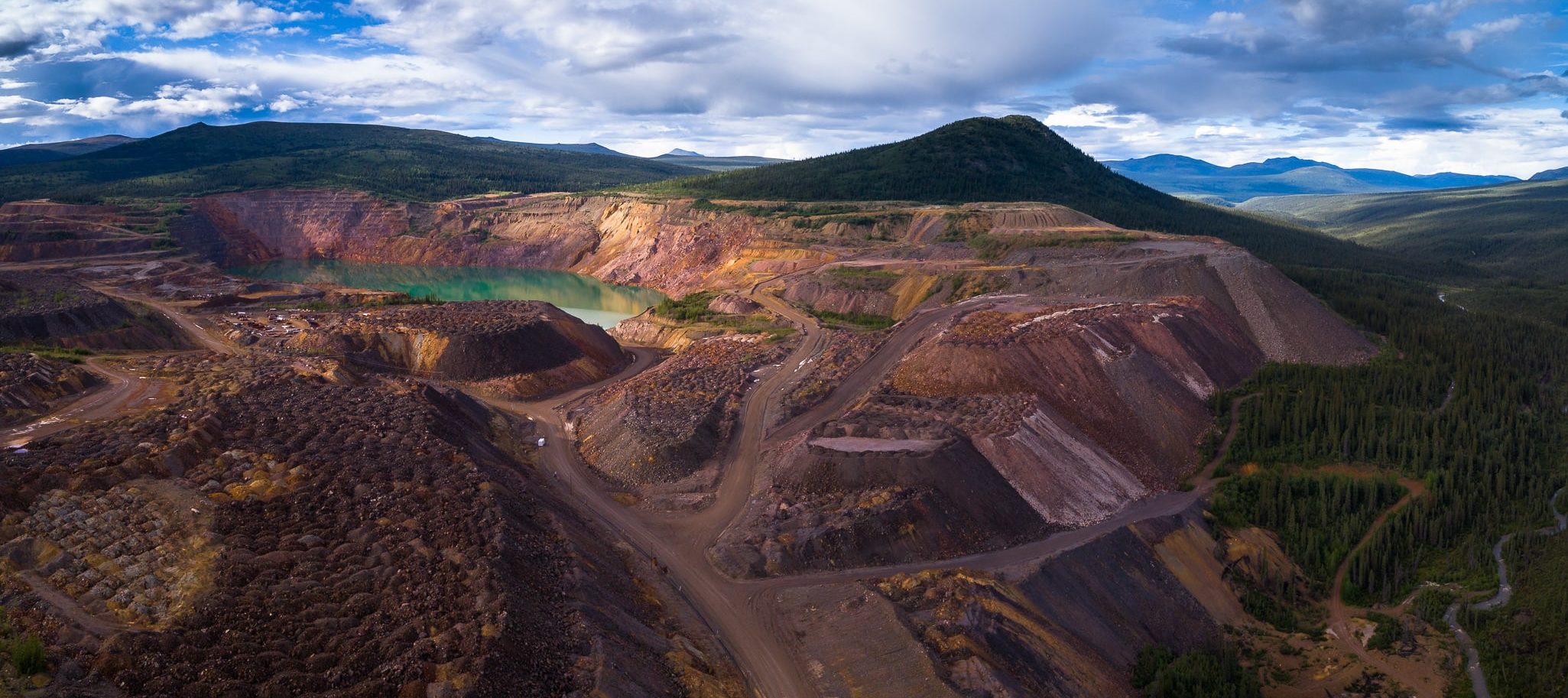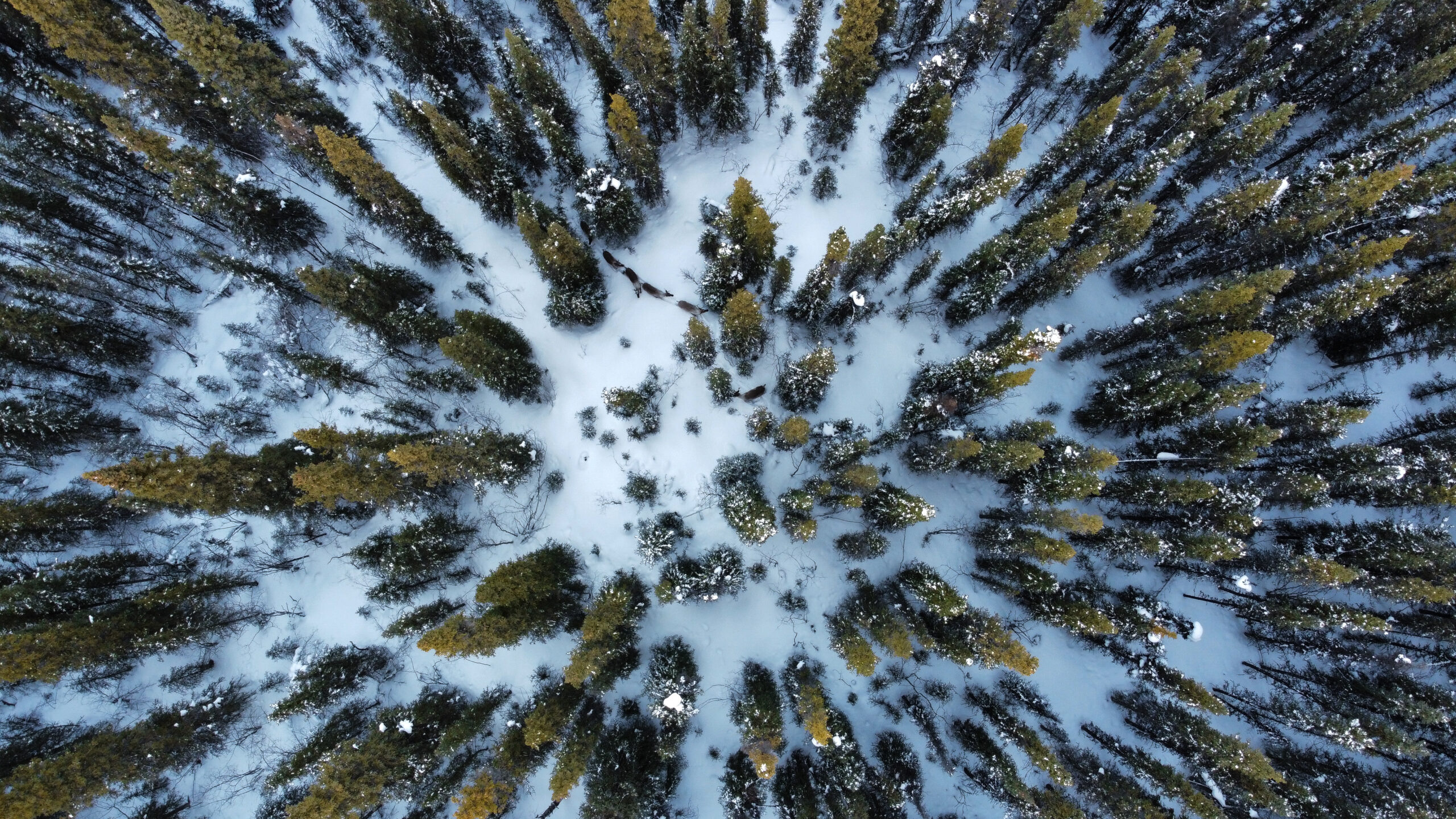
Rocky Mountain coal mine in Alberta takes next step to expansion
In Alberta, a massive open-pit coal mine near Jasper National Park is hoping to expand...
Get the inside scoop on The Narwhal’s environment and climate reporting by signing up for our free newsletter.
Amid wetlands and stunning mountains, at the crossroads of caribou and bird migration routes, is the point where the Pelly and Ross rivers meet. Its name is Tū Łī́dlini, which means “where the rivers meet” in the Kaska language.
“Across from the mouth is where our people used to gather for thousands of years,” Roberta Dick, councillor for the Ross River Dena Council, explained. “People from the Northwest Territories and all over central Yukon would come there and gather and meet and have hand games and dances.”
Today, Ross River is still home to Kaska people, but the landscape has been disturbed in recent decades by mining. The presence of Kaska people has also been disturbed, as they were displaced from Tū Łī́dlini during colonization. Still, the region remains important to the community and the Ross River Dena Council has been working to keep it safe for future generations.
On Dec. 6, Tū Łī́dlini came one step closer to being formally protected and co-managed by the Ross River Dena Council, the Yukon government and federal government. The council, territorial government and Parks Canada signed a memorandum of understanding to work together and assess the feasibility of establishing an Indigenous Protected and Conserved Area which would span 40,902 square kilometres — bigger than Vancouver Island, Belgium or Lake Erie.

In a statement, Chief Dylan Loblaw said, “Ross River Dena Council is pleased to be advancing efforts to finalize our IPCA Declaration within our Ross River Area. This Declaration is issued pursuant to our Indigenous laws, and will help ensure our rights, interests and values are properly respected in this important area.”
The proposed protected area is home to the at-risk Finlayson caribou herd, which are part of the northern mountain woodland caribou listed as a species of special concern under the federal Species At Risk Act. The area also encompasses ancient village sites and a group trapline built in the 1800s, and many sites that are sacred to the nation.
“There’s sacred mountains. There’s people buried all over the territory, the majority of them are buried by rivers, because rivers were the transportation system for our people for thousands of years,” Dick said.
If established, the protected area would protect about eight per cent of Yukon’s land mass. Currently, Yukon has protected and conserved 21.1 per cent of lands. The federal government’s goal is to protect 30 per cent of lands and waters by 2030, meaning Tū Łī́dlini could bring Yukon to the cusp of meeting the 30 by 30 goal on its own terms.
The memorandum specifies existing mineral claims in the area will remain if the protected area is established. This includes areas with significant mining operations as well as those subject to advanced mineral exploration.
Yukon has prohibited new mineral claims in the Ross River area since 2013, after the territorial courts ruled the Yukon government must notify, consult and accommodate the Ross River Dena before exploration happens in their territory.

Yukon adheres to a free entry system that has been heavily criticized by conservationists and First Nations, which dates back to the Gold Rush. It allows anyone to easily stake a claim.
The Yukon government is working to update its mining laws.
Chief Dylan Loblaw, Premier Ranj Pillai and Steven Guilbeault, Minister of Environment and Climate Change, signed the memorandum in Ottawa.
Pillai called it a “significant step.”
“Through this partnership, we aim to explore innovative, Indigenous-led approaches to stewardship that balance environmental conservation, cultural preservation and economic opportunity,” he said in a statement.

Ross River Dena Council, part of the Kaska Nation, will appoint two members to a steering committee to lead the feasibility study, alongside one representative each from the Yukon and federal governments. The committee will engage with industry and communities and “consider the environmental, economic and other values and interests in the area,” the memorandum reads.
According to a statement from the Yellowstone to Yukon Initiative, which protects habitat between those regions to allow wildlife to move, the Ross River protected area would provide “critical habitat along the expansive Yellowstone to Yukon corridor.”

The almost 41,000-square-kilometre proposed protected area is just a portion of the Ross River Dena’s 240,000-square-kilometre traditional territory. In co-managing a protected area, the Ross River Dena will be fulfilling roles as stewards that were disrupted by colonization, Dick said. Different families would act as stewards for different areas.
In the 1950s Kaska people were displaced from Tū Łī́dlini due to colonization, she said. Their houses were “dragged” away from the site to a new settlement.
To return as stewards of the wetlands, the trapline, the river, is deeply meaningful.
“It’s a significant value to our people,” she said.
Get the inside scoop on The Narwhal’s environment and climate reporting by signing up for our free newsletter. A $335 million funding commitment to fund...
Continue reading
In Alberta, a massive open-pit coal mine near Jasper National Park is hoping to expand...

A trade war could help remake B.C.’s food system, but will family farmers be left...

First Nations are leading efforts to make sure lake sturgeon can find a home in...
